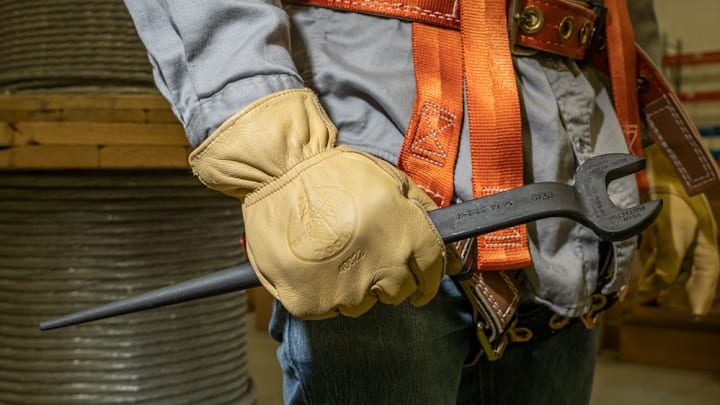Casual home improvement projects don’t usually call for a spud wrench, a tool that turns fasteners on one end and features a long, tapered spike on the other. It’s a curious design, albeit one that still occupies the equipment collection of specialty workers. In the tradition of many other wrenches—the monkey wrench, the Allen wrench, and the Crescent wrench—it also sports a strange name. So why is it called a “spud wrench”? And what exactly is it used for?
The Origin of Spud Wrench
The Oxford English Dictionary’s first citation for the term spud wrench in print occurred in 1939 (though we were able to actually date a reference back to 1906). Per the OED, a book with the high-octane title of Steam and Hot Water Fitting described the spud wrench as “another handy tool … made to fit the spuds of the different sizes of the union radiator valves and traps.” In this instance, spud appears to refer to a plumbing component, hence the need for a specialty wrench.
Another OED citation, this one coming in 1960, provides a different perspective with some regrettable language. The wrench “is so called because the handle is formed into a long, heavy pin (or spud) that is thrust through and used by the erection men for matching up holes in connections to be fastened together.”

In one case, the spud is a part. In the latter, it’s the handle itself—a piercing tool used by “erection men” to line up holes in steelwork so that a bolt or other securing hardware can be threaded through. But the OED omits any etymology for the term.
One possible explanation comes with the slang term for food. Spud was used to describe a potato as far back as the 1800s. The tool used to uproot the potato was also known as a spud. The most likely explanation is that a spud wrench may have reminded someone of such a tool, though its purpose was to align holes, not to be used for farming work.
Why People Reach for a Spud Wrench
The spud wrench grew popular with the growth of high-rise construction in the 20th century when workers had to secure iron or steel beams and girders and needed a tool that could perform several functions at once. The tool became known as an ironworker’s spud wrench for this reason, though it also had applications in automotive assembly. The appeal was in the versatility: Line up two holes with the tapered end, then flip it to use the wrench to secure a bolt.
But the wrench isn’t relegated strictly to steelwork. As the OED noted, plumbers use a spud wrench to loosen specific components (bolts, collars) in older toilets, which connect the toilet with the refill water tank. This version of the spud wrench, however, is considerably different in design than the construction spud wrench, with two adjustable heads meant to circumvent the tight space of plumbing fasteners.
Spud wrenches are still part of the ironworker’s tool belt. They’re emblematic enough of the trade that in 2003, a gathering of workers involved a spud wrench tossing competition in which players scored points by landing the wrench’s spiked end on a bull’s eye 25 feet away.
Tossing, dropping, or otherwise mishandling a heavy tool of impalement can have consequences. In 1979, a Missourian worker named Al Shaw was sitting on a beam when a spud wrench fell 125 feet, plunging into his back. It missed his spinal column by just 2 inches.
Read More About the Origins of Tool Names:
